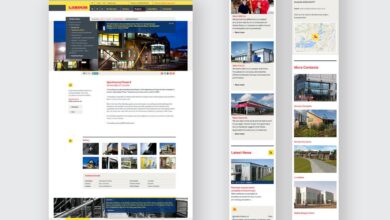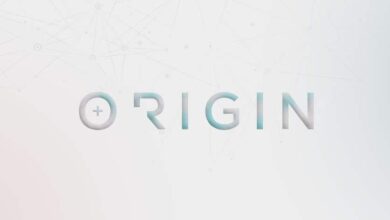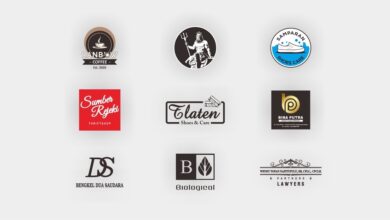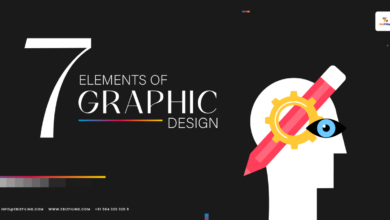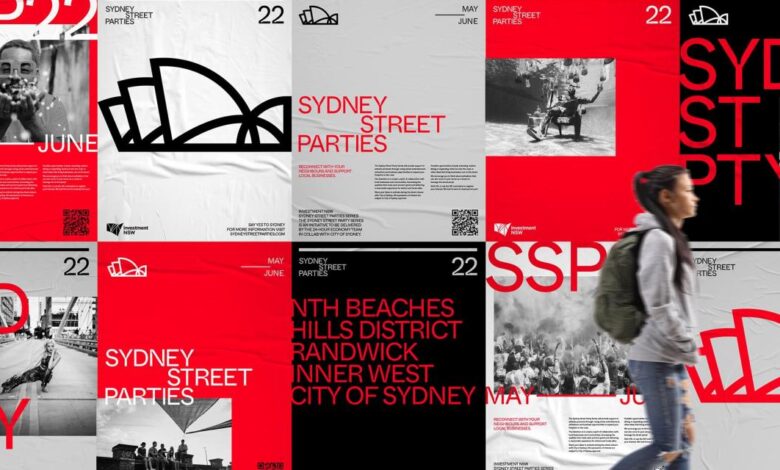
Choosing a Branding Design Agency
Choosing a branding design agency is a pivotal decision for any business, big or small. It’s about more than just a pretty logo; it’s about crafting a visual identity that resonates with your target audience, communicates your brand’s unique value proposition, and ultimately drives growth. This journey involves careful planning, thorough research, and a keen understanding of what you need from an agency partnership.
Let’s dive into the key steps to finding the perfect fit.
From understanding your brand’s core values and target market to evaluating agency portfolios and negotiating contracts, the process requires a strategic approach. We’ll explore how to define your needs, research potential agencies, assess their capabilities and credibility, and ultimately, choose a partner who can bring your brand vision to life. We’ll cover everything from creating a detailed project scope and setting a realistic budget to establishing clear communication channels and ensuring a smooth collaboration.
Understanding Your Brand Needs
Choosing the right branding design agency is crucial, but before you even start looking, you need a crystal-clear understanding of your own brand. This self-assessment is the foundation upon which a successful branding strategy is built. Without it, you risk miscommunication with agencies and ultimately, a brand identity that doesn’t resonate with your target audience.Before diving into the specifics of your brand’s visual identity, let’s first define who you are and what makes you special.
This will guide your interactions with potential design agencies and ensure they understand your vision.
Ideal Client Profile
Defining your ideal client profile is essential. It’s more than just demographics; it’s about understanding their psychographics – their values, aspirations, and lifestyle. For example, if you’re a sustainable clothing brand, your ideal client might be a young, environmentally conscious professional who values ethical and high-quality products. Knowing this allows you to tailor your brand messaging and visual identity to appeal directly to them.
This includes understanding their purchasing habits, media consumption, and pain points. Consider factors like age, location, income level, occupation, interests, and values. The more detailed your profile, the better equipped you’ll be to communicate your needs effectively to a design agency.
Unique Selling Proposition (USP), Choosing a branding design agency
Your USP is what sets you apart from the competition. It’s the single most compelling reason why a customer should choose you over anyone else. It’s not just about what you do; it’s about
- why* you do it and
- how* you do it differently. For instance, a coffee shop might have a USP of ethically sourced beans and a commitment to sustainable practices. A software company might offer unparalleled customer support and rapid response times. Clearly articulating your USP is critical for communicating your brand’s essence to a design agency and ensuring they capture it in your visual identity.
Key Brand Values
Three core values should guide all your brand decisions. These are the fundamental principles that underpin your business and inform your interactions with customers. For example, a brand might value sustainability, innovation, and community. These values should be reflected in every aspect of your brand, from your product design to your customer service. A design agency will use these values to create a consistent and authentic brand identity.
These values act as a compass, ensuring that all creative decisions align with your overall brand mission.
Mood Board: Visual Identity
Imagine a mood board representing your brand’s visual identity. The color palette is earthy and organic, incorporating muted greens, warm browns, and creamy off-whites, evoking a sense of natural calm and trustworthiness. Textures are crucial; think rough-hewn wood, soft linen, and the subtle grain of recycled paper. The imagery would feature close-up shots of natural elements – dew-kissed leaves, sun-drenched fields, and the intricate patterns of tree bark.
These visuals aim to convey a sense of authenticity, sustainability, and handcrafted quality, reflecting the brand’s commitment to ethical practices and natural ingredients. This is just one example; your mood board will be unique to your brand and its specific values.
Researching Branding Agencies: Choosing A Branding Design Agency
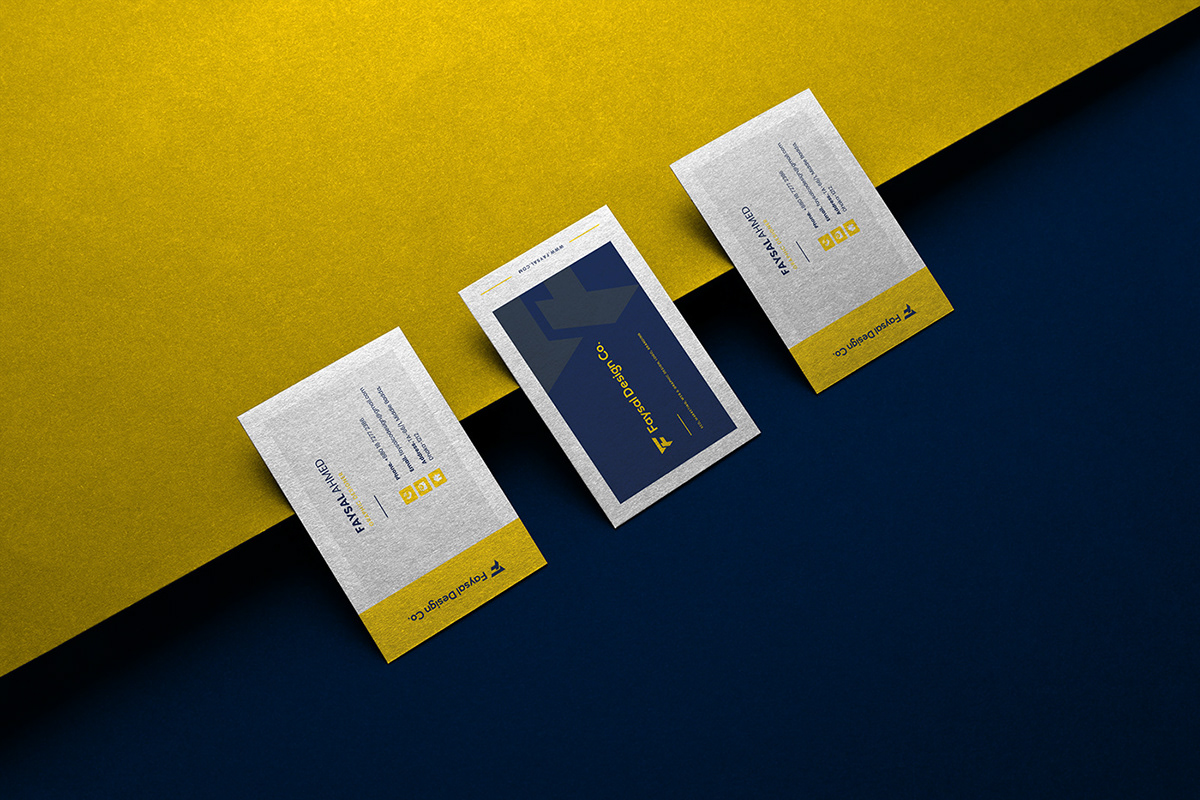
Source: behance.net
Choosing the right branding agency is crucial for your business’s success. A thorough research process will ensure you find a partner who understands your vision and can effectively translate it into a compelling brand identity. This involves more than just looking at pretty websites; it requires a deep dive into their capabilities, experience, and overall approach.
Agency Portfolio Comparison
To effectively compare agencies, I analyzed the portfolios of five different firms, focusing on their specialization, notable clients, and overall design style. This provides a snapshot of their capabilities and allows for a more informed decision. The following table summarizes my findings:
| Agency Name | Specialization | Notable Clients | Overall Style |
|---|---|---|---|
| Agency A (Fictional Example) | Luxury Goods & High-End Retail | Example Luxury Brand 1, Example Boutique Hotel Chain | Minimalist, Sophisticated, Elegant |
| Agency B (Fictional Example) | Technology & SaaS Startups | Example Tech Startup A, Example SaaS Company B | Modern, Bold, Tech-Forward |
| Agency C (Fictional Example) | Food & Beverage, Sustainable Brands | Example Craft Brewery, Example Organic Food Company | Warm, Earthy, Approachable |
| Agency D (Fictional Example) | Non-profit Organizations, Social Impact Businesses | Example Charity A, Example Environmental NGO | Clean, Purpose-driven, Authentic |
| Agency E (Fictional Example) | Healthcare & Pharmaceuticals, B2B | Example Pharmaceutical Company, Example Hospital System | Professional, Trustworthy, Reliable |
Agencies Specializing in [Your Industry – Replace with your industry]
Let’s assume my industry is “Sustainable Food Production”. Three agencies particularly relevant to this sector would be:
The expertise of these agencies is relevant because they possess a deep understanding of the specific visual language, target audience, and ethical considerations associated with sustainable and environmentally conscious brands. Their experience in crafting successful branding strategies within this niche is invaluable.
Services Offered by Three Specialized Agencies
Understanding the specific services offered by each agency is vital in determining their suitability for your project. The following lists Artikel the typical services offered by agencies specializing in sustainable food production (these are examples and may vary depending on the specific agency):
Agency C (Fictional Example):
- Brand Strategy & Positioning
- Logo Design & Brand Identity Development
- Packaging Design
- Website Design & Development
- Marketing Collateral Design
- Photography & Videography
Agency F (Fictional Example):
- Brand Audits & Assessments
- Brand Storytelling & Messaging
- Sustainable Packaging Design & Sourcing
- Social Media Strategy & Content Creation
- Public Relations & Media Outreach
Agency G (Fictional Example):
- Brand Naming & Tagline Development
- Visual Identity System Creation
- Illustration & Graphic Design
- Brand Guidelines & Style Guides
- Digital Marketing & Optimization
Evaluating Agency Capabilities
Choosing the right branding agency isn’t just about finding a pretty portfolio; it’s about finding a team that truly understands your brand vision and can effectively translate it into a compelling visual identity. This involves a thorough evaluation of their capabilities, going beyond surface-level impressions to uncover their true potential. A successful partnership hinges on shared understanding, clear communication, and a proven track record.A crucial aspect of this evaluation is assessing the agency’s understanding of your brand.
This goes beyond simply reviewing their case studies; it’s about delving into their process and determining their ability to grasp the nuances of your business.
Assessing an Agency’s Brand Understanding
To gauge an agency’s understanding of your brand, a structured questionnaire can be invaluable. This questionnaire shouldn’t just ask about their process; it should challenge them to demonstrate their comprehension. The questions should be designed to elicit insightful responses, revealing their ability to think critically about your brand’s positioning, target audience, and unique selling propositions. Here’s a sample questionnaire:
- Describe your understanding of our brand’s target audience, including their demographics, psychographics, and needs.
- How would you define our brand’s unique selling proposition (USP) and how would you communicate it visually?
- Based on our brand’s current positioning, what are the key opportunities and challenges you see?
- What are your initial thoughts on how we can improve our brand’s visual identity to better reflect our values and goals?
- Can you provide examples of similar brands you’ve worked with, and how did your approach differ based on their specific needs?
The responses to these questions will reveal whether the agency has truly done its homework and possesses a deep understanding of your brand’s complexities. Vague or generic answers should raise red flags. You’re looking for evidence of insightful analysis and a strategic approach.
Agency Communication Style and Responsiveness
Effective communication is the cornerstone of any successful client-agency relationship. An agency’s communication style and responsiveness directly impact the project’s timeline, budget, and overall success. Clear, concise, and proactive communication fosters trust and ensures everyone is on the same page. Conversely, poor communication can lead to misunderstandings, delays, and ultimately, a disappointing outcome.
Examples of Effective and Ineffective Client-Agency Communication
Effective communication involves regular updates, proactive problem-solving, and readily available points of contact. For instance, a well-structured project timeline with clearly defined milestones and regular check-in meetings ensures transparency and allows for early identification and resolution of any issues. A dedicated project manager who is responsive to emails and calls and readily available for questions provides a sense of security and collaboration.Ineffective communication, on the other hand, is characterized by infrequent updates, delayed responses, and a lack of clarity.
For example, missed deadlines, unclear instructions, and inconsistent communication channels can create confusion and frustration. Imagine a situation where crucial design decisions are made without consulting the client, or where feedback is ignored or significantly delayed. This lack of responsiveness can lead to significant rework and wasted resources. A responsive agency will not only provide timely updates but also proactively anticipate potential challenges and offer solutions.
Assessing Agency Credibility
Choosing a branding agency is a significant investment, so due diligence is crucial. Beyond their portfolio and proposed strategies, you need to thoroughly assess their credibility to ensure you’re partnering with a reliable and reputable firm. This involves more than just a quick glance at their website; it requires a deeper dive into their past performance and client relationships.Checking an agency’s credibility isn’t about finding perfection; it’s about identifying a firm with a proven track record and a commitment to client success.
A thorough assessment will help you avoid potential pitfalls and ultimately select an agency that aligns with your brand’s values and goals.
Successful Branding Projects
Examining a prospective agency’s portfolio is essential. Don’t just skim the surface; delve into the details of their past projects. Look for case studies that demonstrate a clear understanding of the client’s needs, a well-defined strategy, and measurable results. For instance, an agency that successfully rebranded a struggling local bakery to increase sales by 30% within six months showcases impressive strategic thinking and execution.
Similarly, a national campaign that elevated brand awareness by 20% through a targeted social media strategy demonstrates effective digital marketing expertise. Look for agencies that provide detailed descriptions of their process, including challenges overcome and the creative solutions implemented. The level of detail provided in their case studies reflects their transparency and professionalism.
Client Testimonials and Reviews
Client testimonials and reviews offer invaluable insights into an agency’s work ethic, communication style, and overall client experience. Look beyond generic praise; seek out specific examples of how the agency addressed challenges, met deadlines, and exceeded expectations. For example, a testimonial stating, “They were incredibly responsive to our needs and always kept us informed throughout the process,” speaks volumes about their communication skills.
Conversely, a negative review highlighting poor communication or missed deadlines should raise concerns. Pay close attention to consistent themes across multiple reviews. Are clients consistently praising their creativity and strategic thinking? Or are there recurring complaints about project management or responsiveness? Platforms like Clutch, Google Reviews, and Yelp can provide valuable independent feedback.
Red Flags in an Agency’s Work History
While a flawless history is rare, certain red flags should raise concerns. Inconsistent branding across their portfolio might suggest a lack of cohesive strategy or a failure to understand client needs. An agency with a high turnover rate of employees could indicate internal issues affecting project consistency and client relationships. Similarly, a lack of transparency in their case studies or an unwillingness to provide client references should prompt further investigation.
Missing deadlines consistently highlighted in reviews or a history of legal disputes could indicate serious problems with professionalism and reliability. Ultimately, any pattern of negative feedback or inconsistent performance should be carefully considered before proceeding.
Defining the Scope of Work and Budget
Choosing a branding agency is a significant investment, and understanding the scope of work and budget is crucial for a successful partnership. A clearly defined scope ensures both you and the agency are on the same page, preventing misunderstandings and costly overruns. Similarly, a realistic budget safeguards your financial resources and ensures you get the best value for your investment.This section will guide you through creating a detailed project scope document and developing a realistic budget, also exploring the various pricing models agencies typically use.
Careful planning in these areas is essential for a smooth and effective branding project.
Project Scope Definition
A well-defined project scope document acts as a contract between you and the agency. It Artikels all aspects of the branding project, from initial research and strategy to final deliverables. This document should be comprehensive, covering every detail to avoid ambiguities. For example, it should specify the number of logo concepts, the types of collateral materials to be designed (business cards, website mockups, social media templates, etc.), and the number of revisions allowed.
Including a detailed timeline with key milestones ensures accountability and keeps the project on track. Consider including specific deliverables such as a brand style guide, a mood board, and competitor analysis. The more detailed your scope document, the less likely you are to experience disagreements or unexpected costs later in the process.
Budget Development for Branding Projects
Developing a realistic budget requires careful consideration of various factors. Start by identifying your overall financial goals and allocate a specific amount for branding. Then, break down this amount into different categories based on the scope of work. For instance, you might allocate a portion for research, a larger portion for design, and a smaller portion for project management.
Remember to include costs for potential revisions and unforeseen expenses. It’s also prudent to build in a contingency buffer (e.g., 10-15%) to accommodate any unexpected challenges. Researching average costs for similar projects in your industry can help you create a more accurate budget. For example, a small business might budget $5,000-$15,000, while a larger corporation could spend significantly more, potentially reaching tens or even hundreds of thousands of dollars.
Agency Pricing Models
Branding agencies typically employ several pricing models. Understanding these models is vital for selecting an agency that aligns with your budget and project requirements.
- Hourly Rate: Agencies charge an hourly rate for their services. This model offers flexibility, but it can be challenging to predict the total cost upfront, as the project’s duration may vary. It’s best suited for projects with evolving scopes or those requiring ongoing support.
- Project-Based Fee: This involves a fixed price for the entire project, agreed upon beforehand. This provides greater budget certainty but requires a clearly defined scope to avoid scope creep and additional costs. It’s suitable for projects with well-defined deliverables and timelines.
- Value-Based Pricing: This model focuses on the value delivered rather than the time spent. The agency charges based on the expected return on investment (ROI) for the client. This model requires a strong understanding of your business goals and the agency’s ability to demonstrate its impact.
- Retainer Fee: A retainer agreement involves a monthly or quarterly fee for ongoing branding support and maintenance. This is ideal for businesses requiring consistent branding work, such as regular social media content creation or website updates.
Negotiating and Selecting an Agency
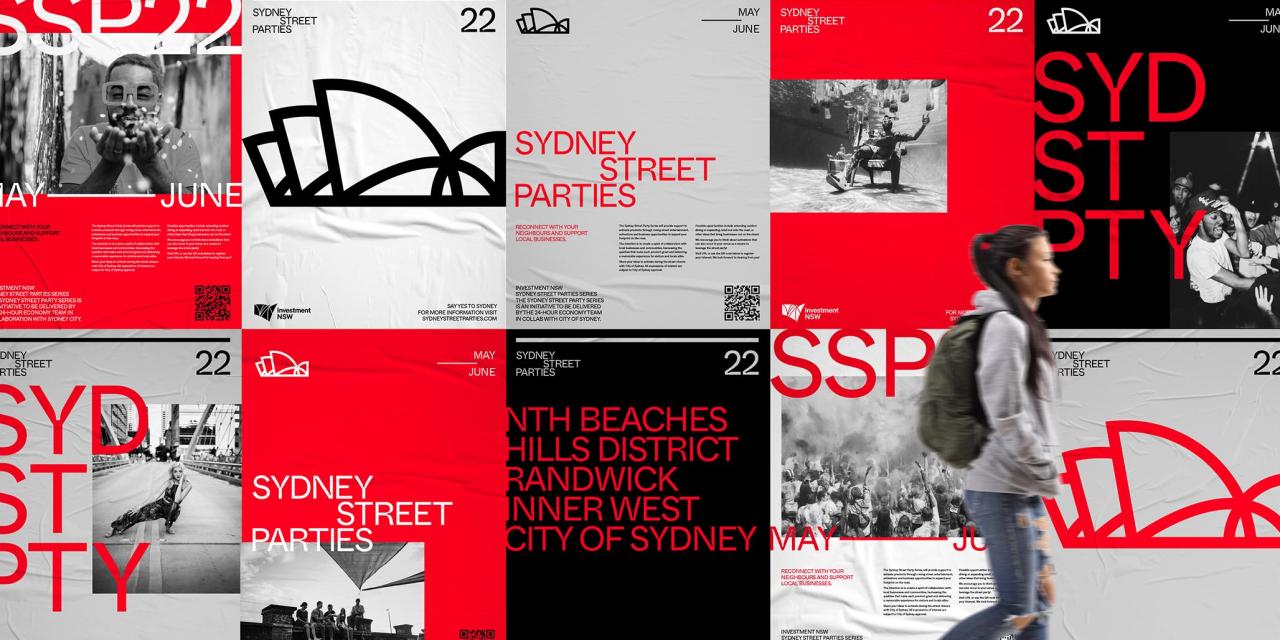
Source: com.au
Choosing the right branding agency is a significant step, but the process doesn’t end with finding a good fit. Negotiating the terms of your agreement and formally selecting an agency requires careful consideration and clear communication to ensure a successful partnership. This involves hammering out the specifics of the project, setting realistic expectations, and establishing a framework for ongoing collaboration.
Once you’ve narrowed down your choices to a few top contenders, it’s time to engage in detailed discussions. This isn’t just about price; it’s about aligning your vision with the agency’s capabilities and ensuring a smooth project workflow. Remember, a strong working relationship is crucial for a successful branding project.
Contract Design: Key Project Agreement Aspects
A well-structured contract protects both you and the agency. It should clearly Artikel the scope of work, deliverables, timelines, payment terms, and intellectual property rights. Ambiguity can lead to disputes later, so be thorough. Consider including clauses addressing revisions, project milestones, and termination conditions. A good contract acts as a roadmap for the entire project.
For example, the contract should specify exactly what deliverables are expected (e.g., logo design, brand guidelines, website mockups), the number of revisions allowed, and the process for approving each milestone. It should also define ownership of the final assets and address potential issues related to copyright and usage rights.
Negotiating Project Timelines and Payment Terms
Negotiating timelines and payment terms requires a balanced approach. Agencies have their own internal processes and resource constraints. Be realistic in your expectations, but also be firm about your deadlines. Payment terms should be structured to reflect project milestones and deliverables, often involving an initial deposit, payments upon completion of key phases, and a final payment upon project completion.
For instance, you might negotiate a phased payment structure where 30% is paid upfront, 30% upon completion of the initial design concepts, 30% upon completion of the final designs and brand guidelines, and the remaining 10% upon final approval and delivery of all assets. This protects both parties and ensures that work progresses as planned. Avoid overly aggressive payment schedules that might discourage the agency from investing the necessary time and resources.
Establishing Clear Communication Channels
Effective communication is paramount. Establish clear channels from the outset, specifying who will be the primary contact person on both sides. Regular meetings, preferably through a combination of video conferencing and email, will help maintain momentum and address any arising issues promptly. A shared project management tool can help track progress, deadlines, and approvals efficiently.
For example, you could agree to weekly check-in calls to review progress and address any questions or concerns. Using a project management tool like Asana or Trello can help everyone stay organized and on track. Maintaining a detailed record of all communications is also a good practice, as this can be useful in case of any disputes.
Picking the right branding design agency is crucial for a strong visual identity, and that identity needs to shine across all platforms. To really make an impact, you’ll want to consider how your brand translates to video, which is why understanding how to leverage YouTube is so important; check out this great guide on getting it on with YouTube to learn more.
A solid agency will help you create assets perfect for YouTube and beyond, ensuring a consistent and memorable brand experience.
Summary
Finding the right branding design agency is a significant investment, but one that pays off handsomely when done correctly. By meticulously following the steps Artikeld—from understanding your brand’s essence to negotiating a comprehensive contract—you can confidently select an agency that aligns with your vision, understands your needs, and delivers exceptional results. Remember, a strong brand identity is the foundation of a successful business, so choose wisely and embark on this journey with confidence!
Questions and Answers
What’s the average cost of hiring a branding design agency?
Costs vary wildly depending on project scope, agency size, and location. Expect to pay anywhere from a few thousand dollars to tens of thousands for a comprehensive branding project.
How long does a branding project typically take?
Project timelines are highly variable, ranging from a few weeks to several months depending on complexity. Expect to discuss timelines in detail with potential agencies.
How do I know if an agency is a good fit for my company culture?
Schedule calls and in-person meetings to get a feel for the agency’s team and their communication style. Do you feel comfortable and respected? This is key to a successful partnership.
What types of contracts should I look for?
Ensure your contract clearly Artikels project scope, deliverables, timelines, payment terms, and intellectual property rights. Seek legal counsel if needed.
